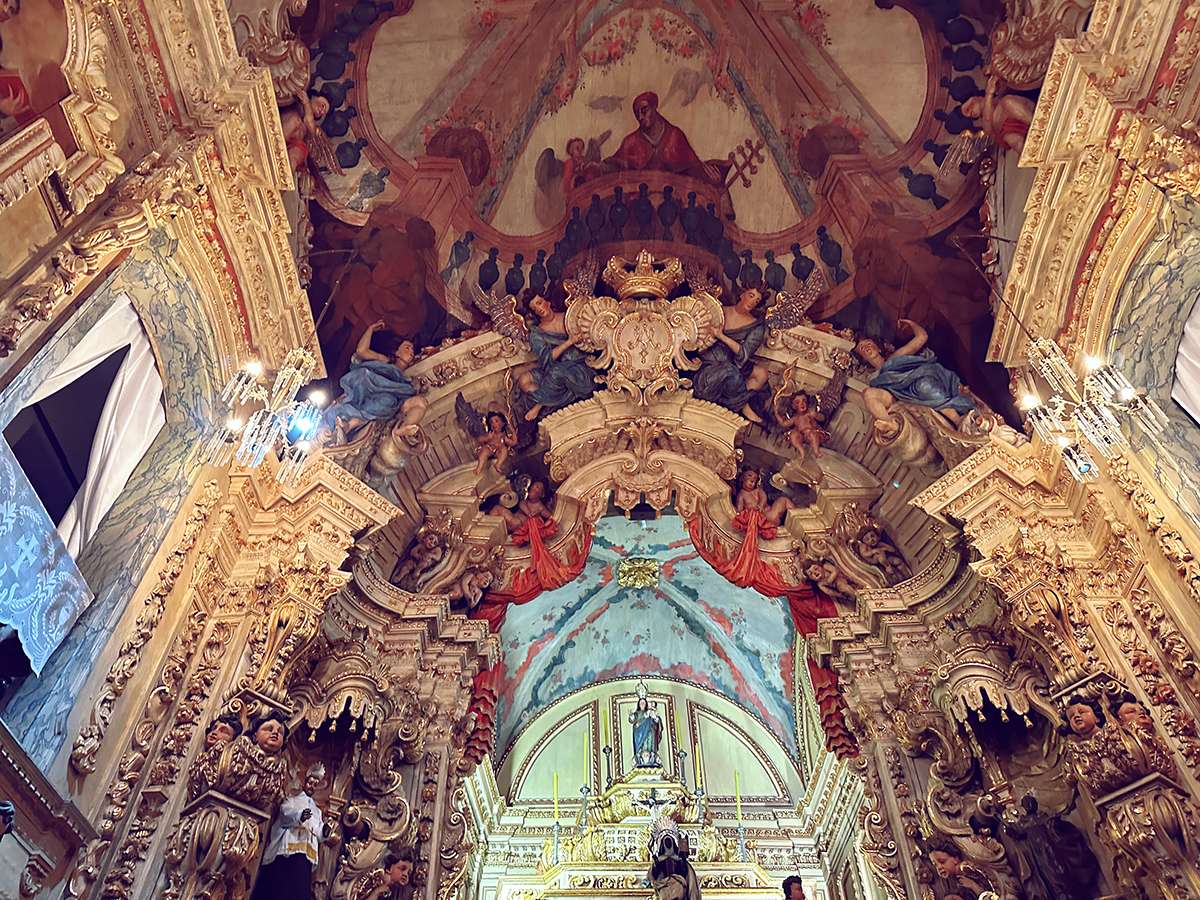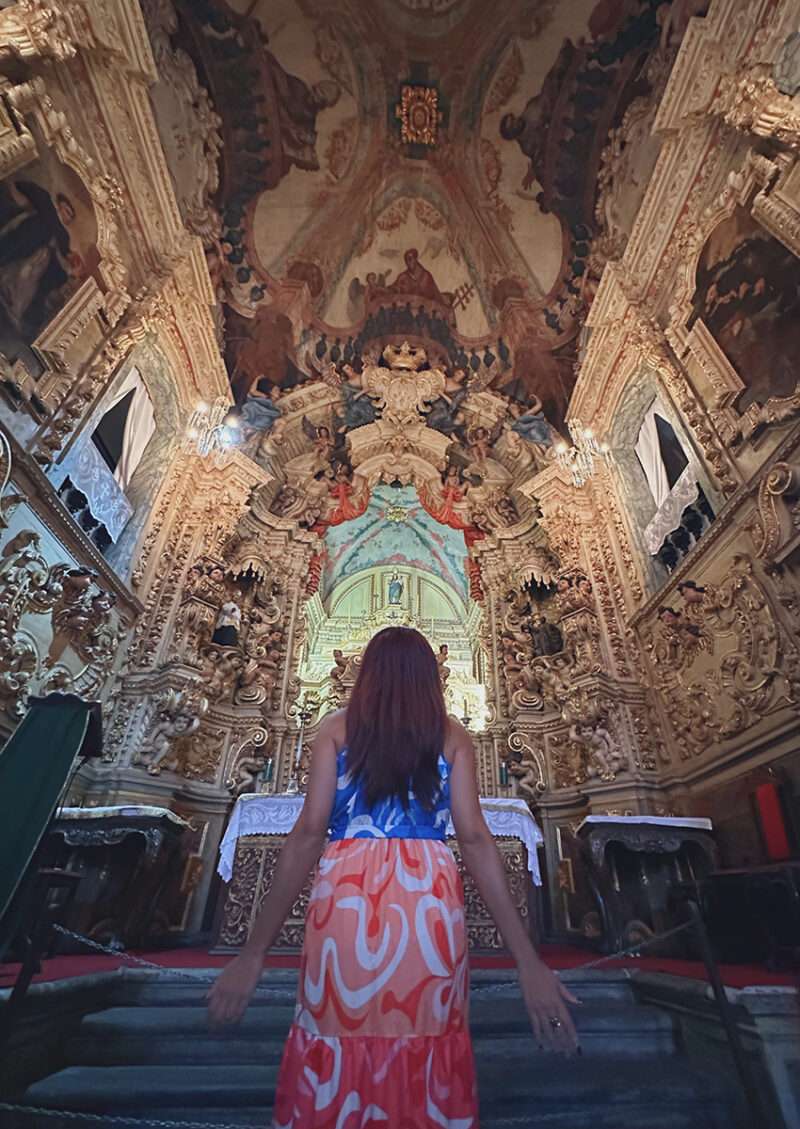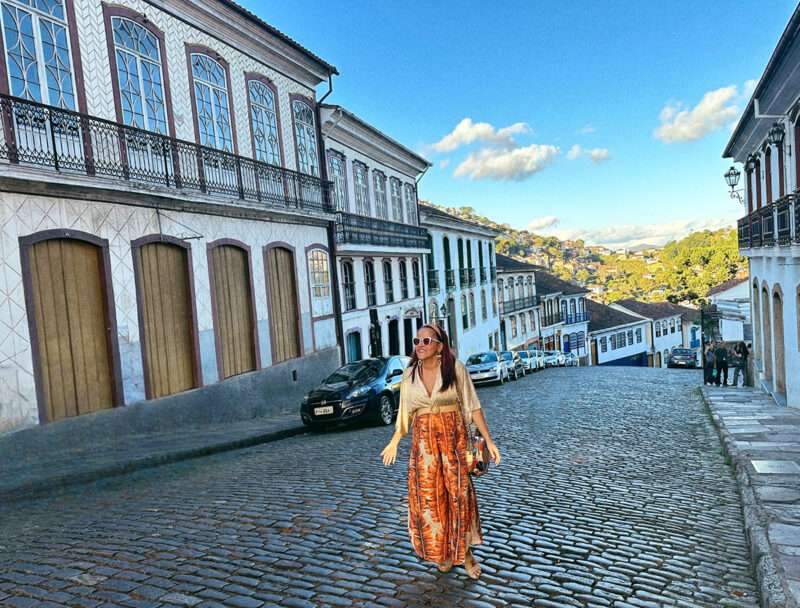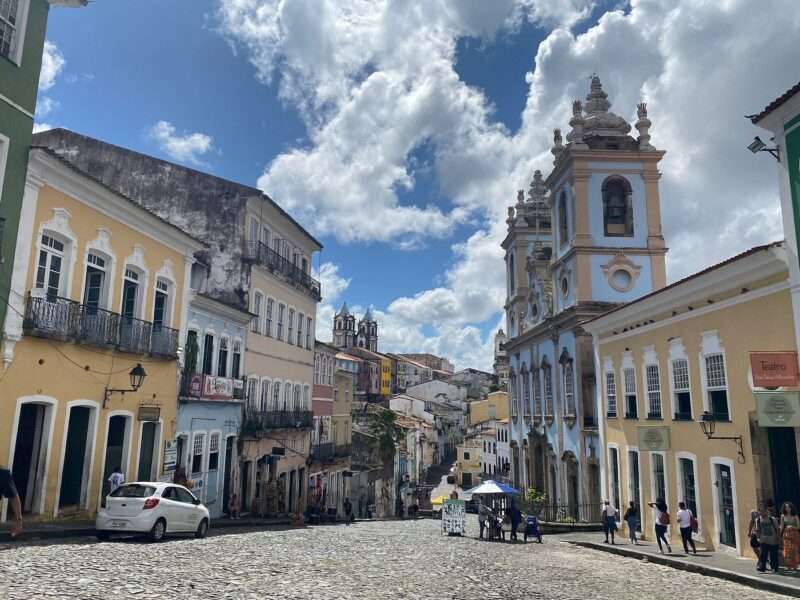
Olga Maria Czarkowski is a seasoned travel writer, storyteller, and…
Nestled in the hills of Minas Gerais, Brazil, the Church of Santa Efigênia represents an incredible story of courage and hope. This beautiful church, perched on Alto da Cruz hill in the historic city of Ouro Preto, isn’t just another tourist stop – it’s a powerful symbol of how Brazil’s Black community created their own space of dignity during colonial times.
Built during Brazil’s 18th-century gold rush and completed around 1785, this UNESCO World Heritage site was more than just a church. It became a sanctuary where enslaved and free Black Brazilians, particularly those of Angolan and Bantu descent, could find community through their brotherhood. At a time when African traditions were banned, they cleverly blended their cultural practices with Catholic ceremonies, creating unique traditions that continue today.

The Saint and Her Significance
One of the most fascinating aspects of the church is its dedication to Santa Efigênia herself – an Ethiopian/Nubian saint rarely featured so prominently in Western Christianity. Her presence here speaks volumes about the church’s founders, who sought representation through a Black saint they could identify with. Inside, you’ll find a striking image of Santa Efigênia, along with other Black saints and religious figures, creating a space where the African diaspora could see themselves reflected in sacred imagery.
The church’s devotion to Santa Efigênia highlights the African community’s determination to maintain connections to their heritage while adapting to their new reality in Brazil. Her story of royal African lineage and steadfast faith resonated deeply with the community that built this church.
A Testament to Artistic Brilliance
The church’s architecture tells its own remarkable story. Look closely at the beautiful baroque design and you’ll find something remarkable – African symbols hidden within traditional Catholic artwork. The stunning wooden altars, covered in local gold, showcase the incredible talent of African and Afro-Brazilian artists who left their mark on colonial Brazilian art.
The church features a notable painted ceiling attributed to Manuel da Costa Ataíde, one of the region’s most important artists. The decorative details throughout the church contain distinctive African cultural elements cleverly integrated into Catholic imagery – a visual testament to cultural resistance and preservation.
Living Heritage
What makes this church truly special is that it’s not just a historical monument – it’s a living piece of history. The Brotherhood that founded the church still maintains connections to the community, keeping centuries-old traditions alive while working on modern social issues. During festivals, the church comes alive with a unique mix of Catholic and African-influenced celebrations that you won’t find anywhere else in Brazil.
The church holds precious artifacts that tell powerful stories of how the local Black community helped buy freedom for enslaved members, provided proper burials for the dead, and supported each other through centuries of hardship. These aren’t just museum pieces – they’re testaments to the human spirit and the power of community.

Planning Your Visit
The church sits high on Alto da Cruz hill, offering stunning views of Ouro Preto’s historic center. Getting there is easy – it’s just a few hours’ drive from Belo Horizonte, the state capital. During my stay at Solar do Rosário Hotel, I discovered how wonderfully walkable Ouro Preto is, though reaching Santa Efigênia requires a bit more effort as you climb the hill. The reward, however, is well worth it – not just for the church itself, but for the breathtaking panoramic views of the city below.
Beyond the city center, Ouro Preto offers plenty of accommodation choices from converted colonial mansions to modern hotels, and local guides who can share deep insights about the church’s history and significance.
Timing Your Visit
While the church is beautiful year-round, consider visiting during one of the religious festivals when the space comes alive with ceremonies that have continued for centuries. The annual celebration of Santa Efigênia’s feast day brings special significance to the church, with processions and traditional ceremonies that highlight the continuing importance of this sacred space to the local community.
Cultural Significance Today
This isn’t just a beautiful church – it’s a testament to how communities can preserve their identity and create positive change even in the hardest circumstances. The success in maintaining African traditions, while adapting to Brazilian Catholicism, offers powerful lessons in cultural resilience that still resonate today.
As Brazil continues to discuss racial justice and cultural identity, this church reminds us of how religious spaces helped preserve Black culture and build strong communities. The church’s ongoing significance exemplifies how historical sites can remain relevant and vital in addressing contemporary social issues.

Another Notable Site: Church of Our Lady of the Rosary
While Santa Efigênia holds a special place in Ouro Preto’s Black heritage, no visit would be complete without also seeing the Church of Our Lady of the Rosary (Igreja de Nossa Senhora do Rosário). Located in the city center, this church represents another important chapter in the story of Afro-Brazilian religious expression.
Built by the Brotherhood of Our Lady of the Rosary of the Black Men, which dates back to around 1709, this church features a distinctive rounded/oval floor plan with a curvilinear façade that sets it apart architecturally. While Santa Efigênia is associated specifically with the Angolan/Bantu community and sits majestically on a hill, the Rosary Church occupies a central location and served a broader community of enslaved and freed Black people.
The Rosary Church is known for its connection to the legend of Chico Rei, a formerly enslaved African king who supposedly helped fund the church’s construction by secretly collecting gold dust in his hair. While Santa Efigênia features twin bell towers and a more traditional rectangular layout, the Rosary Church’s unique curved design and central tower make it architecturally distinct among colonial Brazilian churches.
Both churches represent different brotherhoods and specific cultural expressions within the broader Afro-Brazilian religious experience, making them complementary visits for anyone interested in understanding the full scope of Black heritage in colonial Minas Gerais.
A Must-See Experience
Whether you love history, architecture, or just want to experience something truly unique, the Church of Santa Efigênia and Ouro Preto both offer an unforgettable journey into Brazil’s rich cultural heritage. Here in the mountains of Minas Gerais, you’ll discover a place where faith, resistance, and artistic beauty come together to tell an essential Brazilian story that still matters today.
Every visit to this remarkable church helps support the preservation of not just a building, but a living tradition that has inspired generations. It’s a chance to connect with a powerful story of human resilience and creativity that continues to inspire visitors from around the world.
Plan your journey to Ouro Preto today and witness the resilience of Brazil’s Black heritage firsthand. Share your experience with us using #LIVIDtravels!
Related
What's Your Reaction?
Olga Maria Czarkowski is a seasoned travel writer, storyteller, and digital nomad with over 14 years of experience inspiring audiences to embrace the transformative power of travel. As the founder of the award-winning travel blog Dreams in Heels and the bilingual community Latinas Who Travel, and the travel editor of Livid Magazine, Olga champions diversity and inclusion within the travel industry. Throughout her career, Olga has collaborated with platforms such as HipLatina.com and BeLatina.com, and she has been featured in esteemed publications including Forbes, BBC, PopSugar, Matador Network, Huffington Post, Univision, Telemundo, and Latina Magazine. Olga was also named the Next Generation Latina by Mastercard and Latina Magazine.










